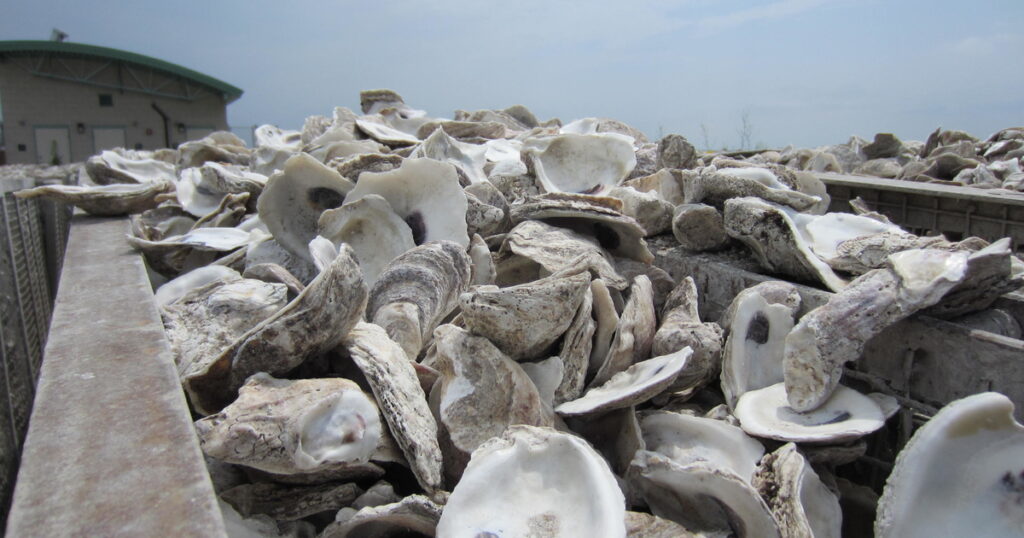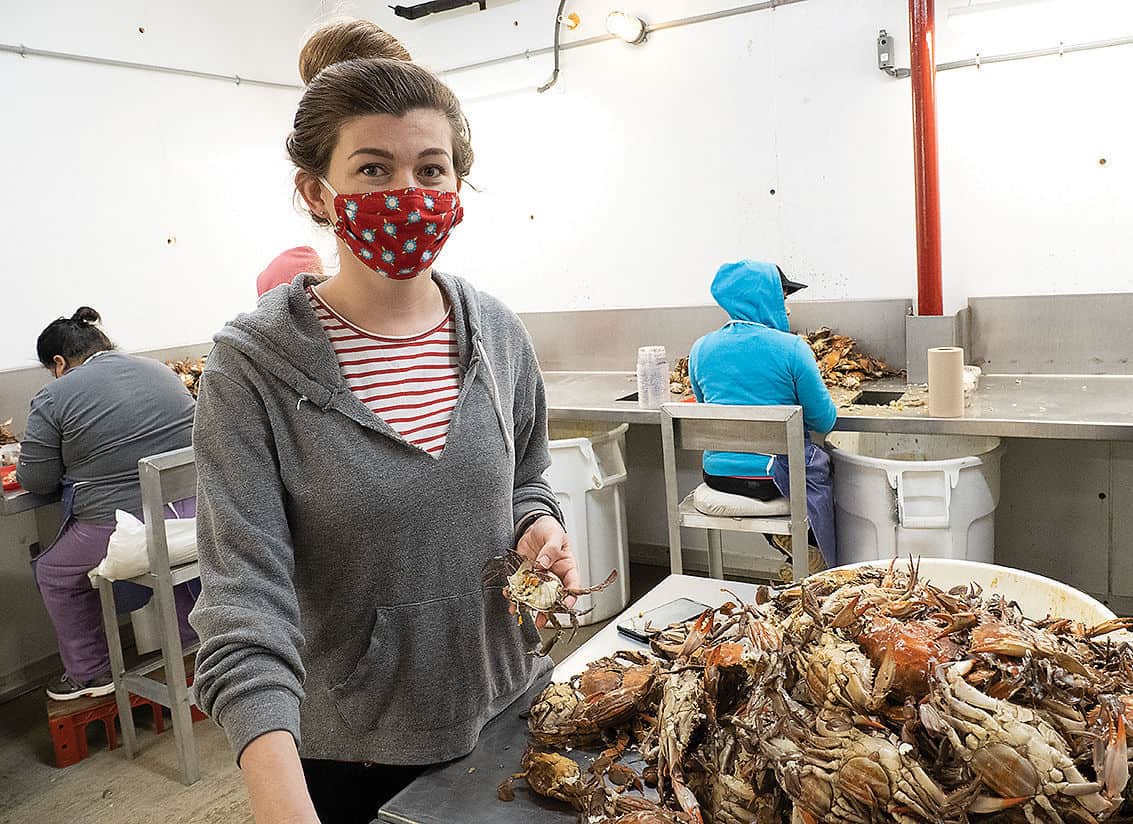Decades ago, old oyster shell was so plentiful it was a popular material to use on driveways. Today, shell is a precious commodity for oyster restoration efforts on the Bay. Old shells are needed as new homes for lab-grown baby oysters to attach to. They are raised in cages in the water and later planted—shells and all—onto sanctuary reefs.
To keep a steady supply of old shells for raising new oysters, Oyster Recovery Partnership’s (ORP) Shell Recycling Alliance collects shells from restaurants, oyster roasts and individuals eating at home, that might otherwise be trashed.
They are collected at the Cooperative Oxford Laboratory in Oxford, Maryland to be used for large-scale oyster restoration projects on the Bay.
Another important source of shells for oyster restoration is shucking houses. DNR pays local shuckers for their used shells. But until now, Maryland shucking houses have mostly sold their shells to businesses or oyster farmers out of state. Because DNR wasn’t paying market value, the shucking houses looked elsewhere. According to DNR, 200,000 bushels of oysters harvested in Maryland stayed in state during the 2021-2022 season. The agency estimates that there could be 100,000 bushels of shell available.
But regulations were in place to cap DNR’s spending on oyster shell at $2 a bushel. With a current market value of $4-$6 per bushel, shuckers were turning to other buyers. The price for hauling and planting fresh oyster shell was 25 cents per bushel.
But DNR aims to change that. Starting this year, DNR’s oyster shell prices will be set by public notice, not by regulation. DNR announced it’s boosting the maximum price it can pay for Maryland oyster shells. It’s also willing to pay watermen more to haul and plant the shell. The move is intended to compensate local watermen and shuckers at a fair market rate and to better compete with out-of-state buyers.
Since oyster harvests and prices fluctuate from year to year, setting the rate by public notice allows the department to adjust their prices to current market conditions.
Where will the money come from that allows DNR to spend more on oyster shell? DNR says the funds it receives for planting shucked shell come from a Maryland Department of Transportation grant and export taxes on oysters sold out of state. In 2023, there was about $4 million in funding available to spend on shucked shell, but local shell was being sold elsewhere. Some of the funds went unspent and DNR had fewer shell to replant on Maryland’s oyster bars—shell that is needed to build new reefs that provide a home for baby oysters and habitat for countless other marine species.
It remains to be seen how big a difference will come of the change to oyster shell price-setting. But with the ambitious oyster restoration goals set for the Chesapeake Bay (10 billion oysters by 2025!), DNR’s need for local oyster shell isn’t going away anytime soon.




